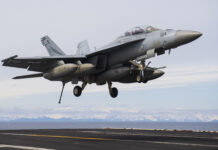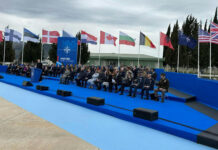NATO announced on 15 November 2023 that it has selected the Boeing E-7A Wedgetail airborne early warning and control (AEW&C) aircraft as its next-generation command-and-control aircraft.
The alliance intends to buy six E-7As via the US Foreign Military Sales (FMS) mechanism to replace its 14 E-3A Sentry Airborne Warning and Control System (AWACS) aircraft, which are scheduled to retire around 2035.
Production of the six new E-7As is set to begin in the coming years, with the first aircraft expected to achieve an initial operational capability by 2031.
“Surveillance and control aircraft are crucial for NATO’s collective defence and I welcome Allies’ commitment to investing in high-end capabilities,” NATO Secretary General Jens Stoltenberg was quoted as saying in a NATO press release. “By pooling resources, Allies can buy and operate major assets collectively that would be too expensive for individual countries to purchase. This investment in state-of-the-art technology shows the strength of transatlantic defence co-operation as we continue to adapt to a more unstable world”.
The NATO E-7As are expected to operate out of Geilenkirchen Air Base in Germany, where the current AWACS fleet is hosted, and could also operate from several forward locations across Europe.
Acquisition of the six E-7As is billed by the NATO Support and Procurement Agency (NSPA) as fulfilling an “initial Alliance Future Surveillance and Control (iAFSC) capability”, with other platforms – including space and maritime intelligence, surveillance and reconnaissance assets as well as the already-operational Northrop Grumman R-Q4D uncrewed aerial vehicles of the Alliance Ground Surveillance (AGS) system – used to deliver a full replacement of the current fleet of 14 AWACS aircraft.
NATO originally acquired 18 E-3As from 1982, but one was lost in a crash in 1996 and three were retired in 2015, 2017 and 2018.

The E-7A features as its primary mission system the Northrop Grumman Multi-role Electronically Scanned Array (MESA) radar located on a dorsal fin on top of its fuselage. This provides 360° surveillance capability without the need to rotate, as with the E-3s’ rotodome-housed AN/APY-1/2 passive electronically scanned-array radars.
The other main contender vying for the NATO AWACS replacement programme was the Saab GlobalEye system, which is mounted on a Bombardier Global 6000/6500 long-range business jet airframe.
The NSPA stated of its selection of the Wedgetail, “The Support Partnership Nations (Belgium, Germany, Luxembourg, the Netherlands, Norway, Romania, and the United States) and NSPA concluded that the Boeing E-7A AEW&C Wedgetail is the only known system currently capable of fulfilling the strategic commands’ essential operational requirements and key performance parameters and available for delivery within the timeframe required.”
As well as the US Air Force, the E-7A has already been selected by Australia, Turkey, South Korea and the United Kingdom.












